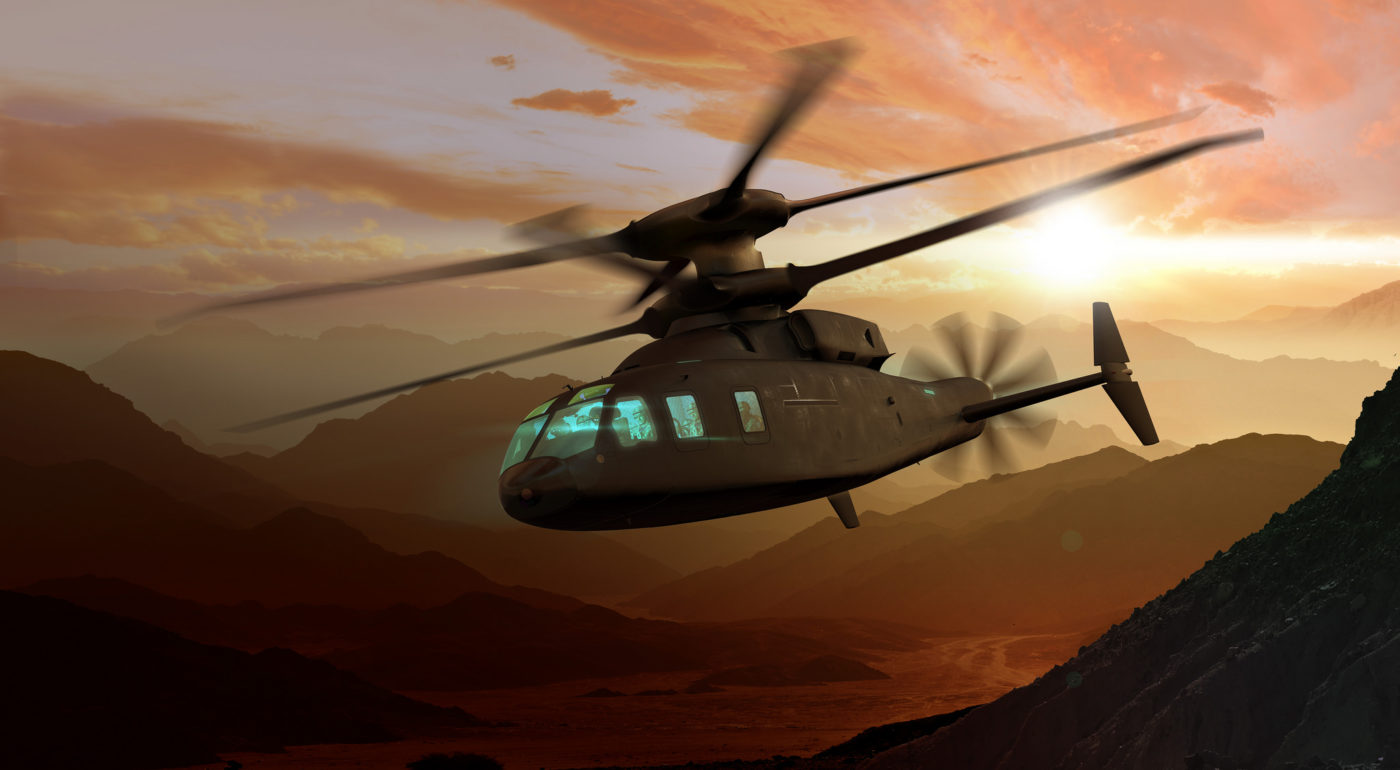The first flight of the Sikorsky-Boeing SB>1 Defiant has slipped to 2019, officials from both companies told reporters on Dec. 12.
The demonstration helicopter had been expected to complete its maiden flight before the end of 2018, but the discovery of “minor” problems to unnamed components during the first of several trial runs on the powertrain system test bed (PSTB) caused the Sikorsky-Boeing team to delay the flight until after the New Year.
“We expect these sorts of things to come up when you run a configuration for the first time,” said Rich Koucheravy, Sikorsky’s director of business development for the Future Vertical Lift (FVL) program. “That is the purpose for building the PSTB, so you discover it off the aircraft and are able to implement the fix. Our goal will be to get the PSTB back in operation shortly.”
The Defiant, a high-speed rigid rotor coaxial rotorcraft, is one of two medium demonstration helicopters for the Joint Multi-Role Technology Demonstrator, a program that is anticipated to lead into the U.S. Army’s Future Vertical Lift program in the mid 2030s to replace the Sikorsky UH-60 Black Hawk and Boeing AH-64 Apache.
While the delay is a setback — the Defiant’s competitor, the Bell V-280 Valor tilt-rotor, has been flying since December 2017 — Sikorsky-Boeing characterized the problems as minor instrumentation or software issues.
“It’s nothing that’s going to require a redesign of major components,” said Randy Rotte, Boeing’s director of global sales and marketing for cargo helicopters and FVL.
He suggested instrument readings had found “interactions that the models didn’t all capture. We had a couple of small things that required some repair … and we should be back up and running on PSTB within the next week or so.”
The completely built Defiant is based on Sikorsky’s cutting-edge compound technology, which has only previously flown in two smaller experimental aircraft, the X2 and S-97 Raider. At over 30,000 pounds, Koucheravy noted the much heavier Defiant configuration has thousands of brackets, connectors and hinges that could contribute to problems in the testing phase.
“We’re actually pleased with the small number of discoveries we have,” he said.
Despite the holdup with the first test flight, Koucheravy said the team would resume PSTB runs and then begin ground runs on Defiant within the next few weeks. “So while we are building time on the PSTB, we’ll shake out the aircraft ground runs, with an eye toward those two items converging very early in 2019, and release the aircraft for flight.”
The PSTB phase is critical to understanding how each of the components reacts in the final airframe, said Rotte.
“Every component on the aircraft has been tested individually … to make sure that it actually does what it is supposed to do. PSTB is our opportunity to test everything … so that we can see all the interactions from a systems level, whether those are heat transfer or electromagnetic interference or vibrations or weight or any of those aspects. This is our chance to experience this whole configuration as a system.”
“Everything for us runs through PSTB,” added Koucheravy. “We have to run it a certain number of hours for our flight safety committee before we get granted our certificate to actually get to fly.”
Earlier this year, the Defiant experienced problems with the new composite rotor blades and the transmission. Rotte said both issues were related to manufacturing challenges and had been resolved.
“The transmission issue had to do with hardness of gears,” he said. “The first sets … were not to the level of hardness we needed, so we had to re-grind and do some things. The transmission has been through its testing … and it passed with flying colors.”
Manufacturing a longer, stiff blade proved to be a bigger challenge than initially expected, he added, requiring a stronger composite spar. “It came down to trying to reuse tools that were not purposely designed for that type of an operation. The blades have been running on PSTB [and] we haven’t experienced anything yet that we see as an issue.”
Both officials said the U.S. Army had been informed throughout the project of any problems or delays with Defiant as the Army nears a decision point on whether to make the FVL a program of record in 2021.





